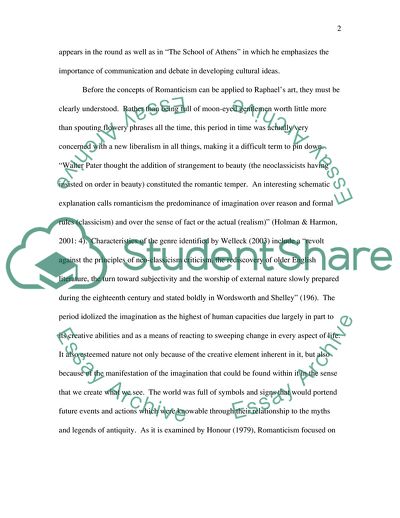Cite this document
(Romanticism in History of Art Essay Example | Topics and Well Written Essays - 1500 words, n.d.)
Romanticism in History of Art Essay Example | Topics and Well Written Essays - 1500 words. https://studentshare.org/visual-arts-film-studies/1718805-romanticism-in-history-of-art-of-the-time-periods-egyptian-mycenaean-etruscan
Romanticism in History of Art Essay Example | Topics and Well Written Essays - 1500 words. https://studentshare.org/visual-arts-film-studies/1718805-romanticism-in-history-of-art-of-the-time-periods-egyptian-mycenaean-etruscan
(Romanticism in History of Art Essay Example | Topics and Well Written Essays - 1500 Words)
Romanticism in History of Art Essay Example | Topics and Well Written Essays - 1500 Words. https://studentshare.org/visual-arts-film-studies/1718805-romanticism-in-history-of-art-of-the-time-periods-egyptian-mycenaean-etruscan.
Romanticism in History of Art Essay Example | Topics and Well Written Essays - 1500 Words. https://studentshare.org/visual-arts-film-studies/1718805-romanticism-in-history-of-art-of-the-time-periods-egyptian-mycenaean-etruscan.
“Romanticism in History of Art Essay Example | Topics and Well Written Essays - 1500 Words”. https://studentshare.org/visual-arts-film-studies/1718805-romanticism-in-history-of-art-of-the-time-periods-egyptian-mycenaean-etruscan.


